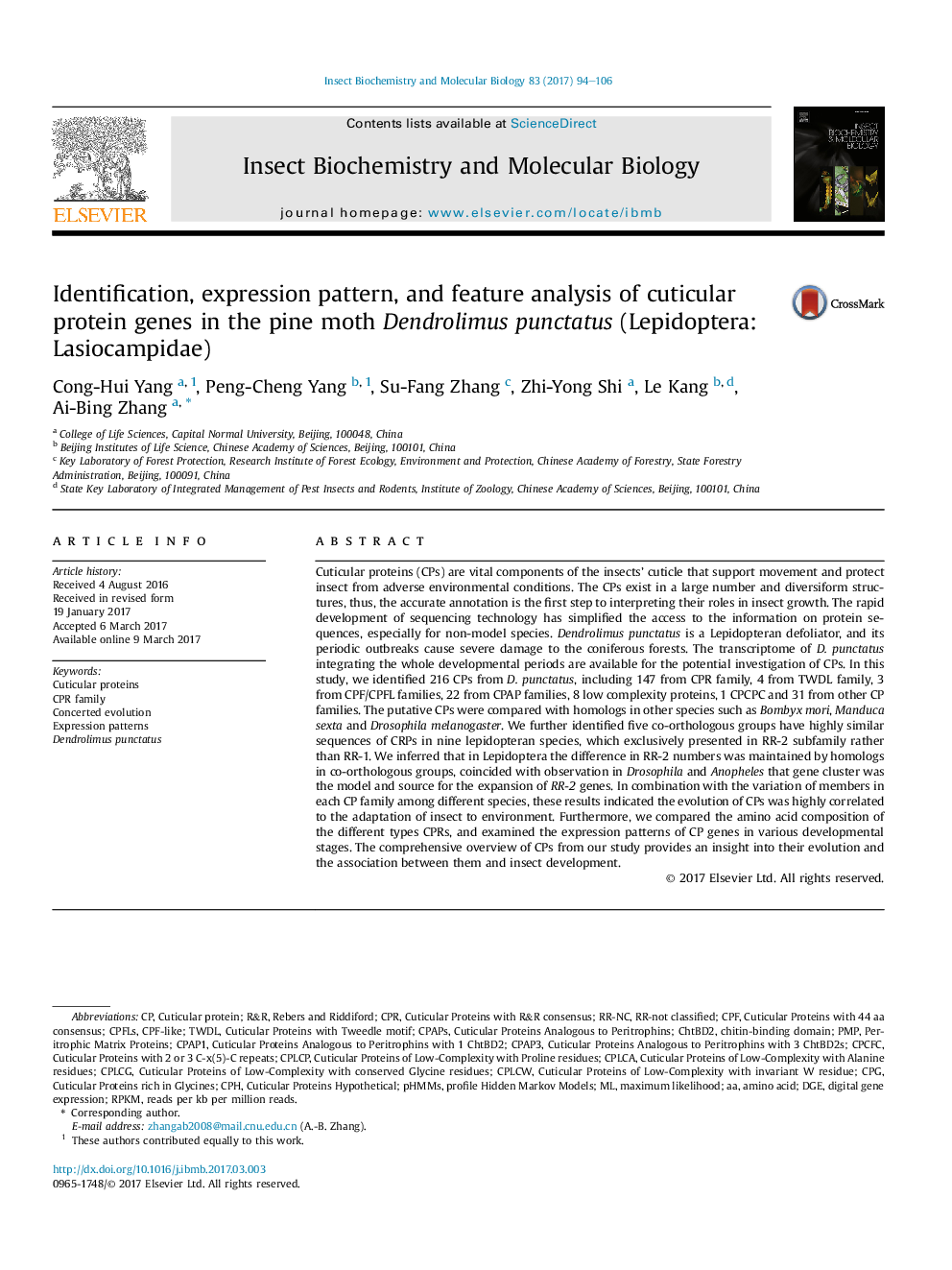| کد مقاله | کد نشریه | سال انتشار | مقاله انگلیسی | نسخه تمام متن |
|---|---|---|---|---|
| 5511179 | 1539469 | 2017 | 13 صفحه PDF | دانلود رایگان |

- 216 cuticular proteins (CPs) that belong to 12 CP families were identified in Dendrolimus punctatus.
- The CPs were compared with homologs in other insect species.
- We explored the evolution pattern of CPR family in Lepidoptera and found five co-orthologous groups of RR-2.
- The expression patterns of CPs were investigated by DGE libraries.
Cuticular proteins (CPs) are vital components of the insects' cuticle that support movement and protect insect from adverse environmental conditions. The CPs exist in a large number and diversiform structures, thus, the accurate annotation is the first step to interpreting their roles in insect growth. The rapid development of sequencing technology has simplified the access to the information on protein sequences, especially for non-model species. Dendrolimus punctatus is a Lepidopteran defoliator, and its periodic outbreaks cause severe damage to the coniferous forests. The transcriptome of D. punctatus integrating the whole developmental periods are available for the potential investigation of CPs. In this study, we identified 216 CPs from D. punctatus, including 147 from CPR family, 4 from TWDL family, 3 from CPF/CPFL families, 22 from CPAP families, 8 low complexity proteins, 1 CPCPC and 31 from other CP families. The putative CPs were compared with homologs in other species such as Bombyx mori, Manduca sexta and Drosophila melanogaster. We further identified five co-orthologous groups have highly similar sequences of CRPs in nine lepidopteran species, which exclusively presented in RR-2 subfamily rather than RR-1. We inferred that in Lepidoptera the difference in RR-2 numbers was maintained by homologs in co-orthologous groups, coincided with observation in Drosophila and Anopheles that gene cluster was the model and source for the expansion of RR-2 genes. In combination with the variation of members in each CP family among different species, these results indicated the evolution of CPs was highly correlated to the adaptation of insect to environment. Furthermore, we compared the amino acid composition of the different types CPRs, and examined the expression patterns of CP genes in various developmental stages. The comprehensive overview of CPs from our study provides an insight into their evolution and the association between them and insect development.
385
Journal: Insect Biochemistry and Molecular Biology - Volume 83, April 2017, Pages 94-106